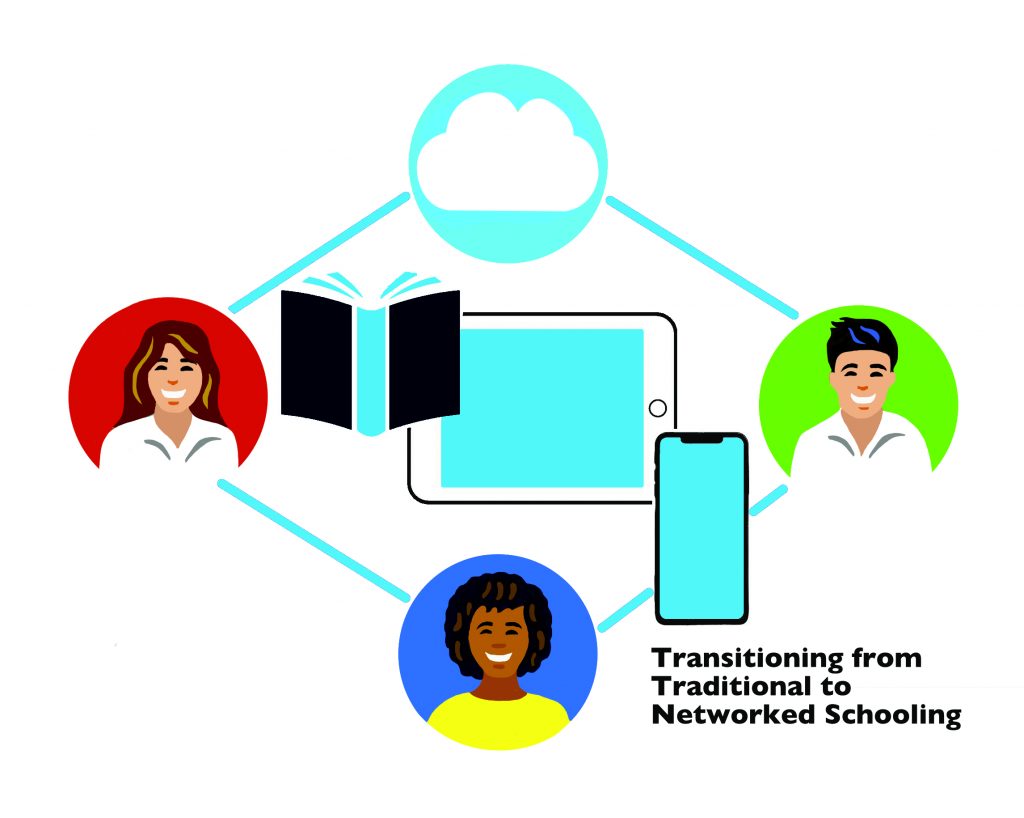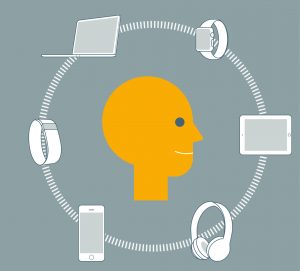Mal Lee
The COVID -19 experience, coupled with the transition to the more networked mode is already shaping as a watershed moment in the history of schooling.
The pandemic alerted the world to the historic transformation underway, accelerated the transition, forced teachers, students, parents and schools to pool their resources and collaborate in the teaching, obliged schools to accommodate societies rapidly evolving expectations and bid them think about the desired nature of the school within a connected world.
Importantly the pandemic, coupled with the network technology necessitated schools use the digital resources of the student’s homes, to collaborate with and actively involve the digitally connected families in the teaching and provide the parents a historic insight into the school’s teaching and workings.
It gave young parents an agency that many are likely not to relinquish lightly.
COVID, in its stress testing of every facet of facet of society and its organisations both transformed significant aspects of life, work and learning and posed fundamental questions of near every organisation.
It did the same with schools. It identified their strengths and shortcomings and asked how fit for purpose were they to educate the nation’s young today.
Significantly the pandemic revealed to school communities worldwide the extent to which ‘their’ school had transitioned from their traditional paper base to one that was more networked, and how ready it was to teach in an increasingly networked mode.
Whether the schools saw that ‘reveal’, as flagged in the first post is moot.
The pandemic showed that most all schools could, albeit to varying degrees, educate its students in a fully networked mode, as well as on site, and use a mix of the two modes.
Importantly it revealed that near all students and teachers had in their personal lives naturally grown their digital mindset and competencies, and had the home connectivity and infrastructure, and in the case of the students the family support, to partake in a fully networked mode of teaching and learning.
That said the COVID experience also highlighted the disturbing social inequities existent in most all schools, with the socially economically advantaged continuing to be advantaged while those less well off, and the marginalised were further disadvantaged. Very early in the pandemic the digital divide, even in nations with 90% plus home connectivity, became strikingly obvious. As did the failure by near all authorities to have put in place the measures to guarantee equity of digital access and home connectivity for all students.
While, for example it is estimated that 9 million plus students (Tyton, 2021) were enrolled in ‘learning pods’ and ‘micro-schools’ in the US in 2020 during the shutdown all were paid for by advantaged families, for advantaged children.
The poor were left to fend for themselves.
The pandemic also reminded the world that schooling the nation’s young entailed far more than the teaching and testing of a few academic subjects. Schools are not and should never be simply about PISA scores.
Schools are nation’s tools for growing, educating, and nurturing all its young. The many concerns brought to the fore during COVID about student alienation, dropping student retention rates, poor socialisation, student well-being, mental health, digital inequities, the marginalised, racism and the treatment of girls are all matters society rightly should expect schools to play a major role in addressing.
Unintentionally COVID reminded societies and their governments schools were unique organisations. They have simultaneously to be constant while also contemporaneous, always adapting their ways to meet society’s evolving expectations.
The pandemic affirmed the constancy in making it clear to all, that the existing school organisational structures that the world has known for a century plus, could not be changed. They were immutable. Society expects schools, likely more than ever, to nurture and educate the students during set times each day, five days a week, for most of the year within the physical place called school.
The social, educational, economic, and political imperative became daily more apparent.
Tellingly the transition to a more networked mode has successfully occurred within the existing structures and will in most instances have to continue doing so in the decades ahead.
COVID laid to rest the belief by many futurists that that the core school organisational structures can be changed, and that the technology removes the need for site based schooling.
COVID also shattered the myth that all schools were the same. It revealed that all had not transitioned to the networked mode at the same rate, nor were all at the same point in their transitioning.
Rather it demonstrated to students and parents globally that every school was unique. Different styles of leadership, mix of staff, heritage, clientele, context, aspirations, shaping vision, culture and level of resourcing all contribute to that uniqueness.
What the pandemic did was to alert school communities to the different stages schools were at in their transition, and that the differences would likely grow. While the astute, visionary heads were shaping highly focussed, tightly integrated networked learning communities, others were trying to retain the ‘grammar of schooling’ within the more networked mode. One school observed tried to do the latter with a 100% migration of its site based schooling online, even to the extent of using the existing lesson times, mandating the students wear uniforms and imposing detentions on those who transgressed.
The imperative of each school shaping their own desired transition became that more apparent.
As did that of schools accommodating, as best they could the ‘new normals’ expected by the wider society. The speed with which schools were required to adopt those changing expectations during the course of the pandemic will be long remembered.
COVID bid each school, like every other organisation, rethink its purpose, its fit for today’s world and to tackle the pitfalls that invariably come with digital disruption, and increased networking.
It should have prompted schools to clarify their educational purpose and the nature of teaching they want to use in a rapidly evolving, seemingly chaotic, networked world.
Was there any such contemplation in your school?
What became apparent globally was that the digital and network technology can be equally well used to unilaterally control and micromanage every facet of the teaching and learning or to distribute the control, to trust and give agency to the teachers, students and parents and have them work collaboratively in the teaching of the young.
What approach would you take?
Which does you school employ?
Has your school begun to address the issues highlighted during the shutdown?
- Do for example all students need to physically attend a place called school, all the time?
- What mix of face to face and networked teaching should the school now use, at different age levels, in different areas of learning?
- Is yours a school where the socially and economically are further advantaged, and the marginalised are still disadvantaged or does it need to provide all a more equitable contemporary education?
- Should ‘success’ at your school still be equated solely with the ability to perform well in handwritten exams that assess academic knowledge, or should it embody something broader, that includes both academic attainment and the ability to thrive within rapidly evolving, uncertain networked organisations?
This series of posts will not attempt to decide on the purpose or the nature of schooling.
Nor will they suggest any one mode of schooling is better, or indeed what mix of on-site and networked teaching is most appropriate.
It leaves that to the school, and education authority.
Moreover, they will make no effort to provide a rationale for the natural transition to a more networked mode, or to identify the plusses or minuses of the global phenomenon.
Rather the posts will address the reality, and hopefully assist shape the desired transition, while at the same time factoring in living with COVID.
- Tyton Partners (2021) School Disrupted. Part 2. July 2021









